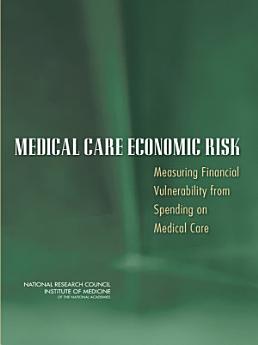Medical Care Economic Risk: Measuring Financial Vulnerability from Spending on Medical Care
About this ebook
In 1995, a panel of the National Research Council (NRC) recommended a new poverty measure, which compares families' disposable income to poverty thresholds based on current spending for food, clothing, shelter, utilities, and a little more. The panel's recommendations stimulated extensive collaborative research involving several government agencies on experimental poverty measures that led to a new research Supplemental Poverty Measure (SPM), which the U.S. Census Bureau first published in November 2011 and will update annually. Analyses of the effects of including and excluding certain factors from the new SPM showed that, were it not for the cost that families incurred for premiums and other medical expenses not covered by health insurance, 10 million fewer people would have been poor according to the SPM.
The implementation of the patient Protection and Affordable Care Act (ACA) provides a strong impetus to think rigorously about ways to measure medical care economic burden and risk, which is the basis for Medical Care Economic Risk. As new policies - whether part of the ACA or other policies - are implemented that seek to expand and improve health insurance coverage and to protect against the high costs of medical care relative to income, such measures will be important to assess the effects of policy changes in both the short and long term on the extent of financial burden and risk for the population, which are explained in this report.








